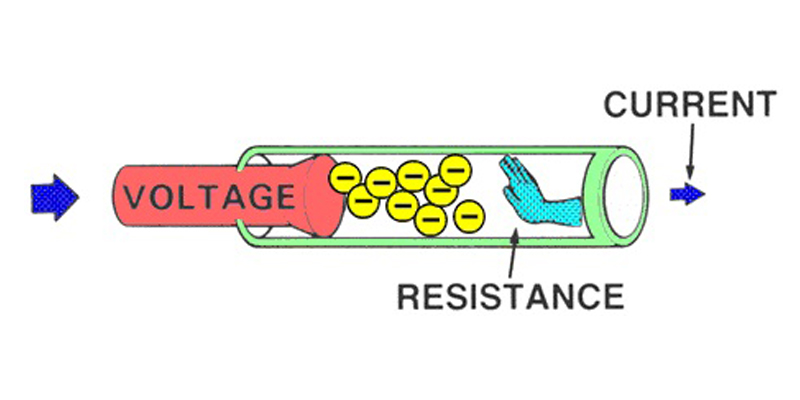
What is Resistance?
Resistance is a measure of the opposition to current flow in an electrical circuit.
Resistance is measured in ohms, symbolized by the Greek letter omega (Ω). Ohms are named after Georg Simon Ohm (1784-1854), a German physicist who studied the relationship between voltage, current, and resistance. He is credited for formulating Ohm’s Law.
All materials resist current flow to some degree. They fall into one of two broad categories:
Conductors: Materials that offer very little resistance where electrons can move easily. Examples: silver, copper, gold, and aluminum.
Insulators: Materials that present high resistance and restrict the flow of electrons. Examples: Rubber, paper, glass, wood, and plastic.
Resistance measurements are normally taken to indicate the condition of a component or a circuit.
The higher the resistance, the lower the current flow. If abnormally high, one possible cause (among many) could be damaged conductors due to burning or corrosion. All conductors give off some degree of heat, so overheating is an issue often associated with resistance.
The lower the resistance, the higher the current flow. Possible causes: insulators damaged by moisture or overheating.
Many components, such as heating elements and resistors, have a fixed-resistance value. These values are often printed on the components’ nameplates or in manuals for reference.
When tolerance is indicated, the measured resistance value should be within the specified resistance range. Any significant change in a fixed-resistance value usually indicates a problem.
“Resistance” may sound negative, but in electricity, it can be used beneficially.
Examples: Current must struggle to flow through the small coils of a toaster, enough to generate heat that browns bread. Old-style incandescent light bulbs force current to flow through filaments so thin that light is generated.
Resistance cannot be measured in an operating circuit. Accordingly, troubleshooting technicians often determine resistance by taking voltage and current measurements and applying Ohm’s Law:
E = I x R
That is, volts = amps x ohms. R stands for resistance in this formula. If resistance is unknown, the formula can be converted to R = E/I (ohms = volts divided by amps).












